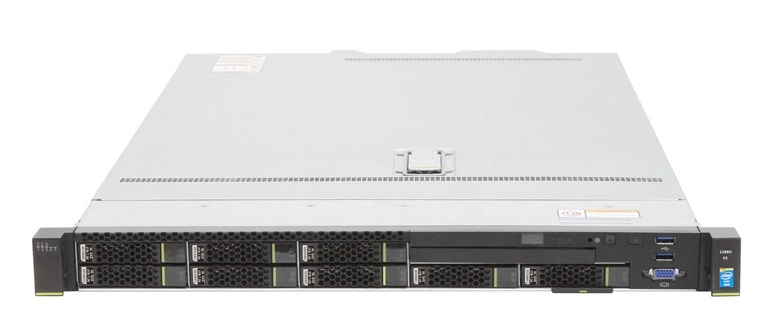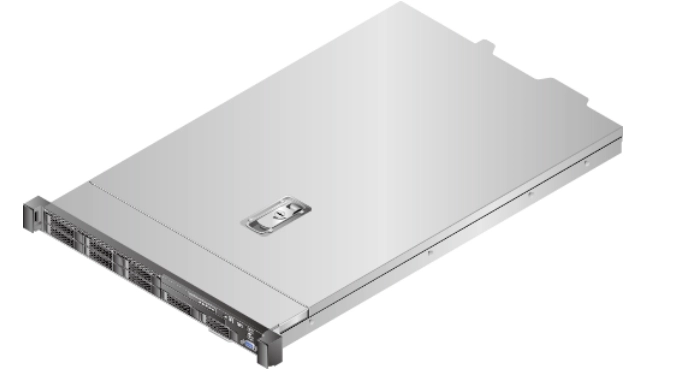Modern data centers need fast, strong, and energy-saving servers to handle edge computing tasks. Reducing latency is key for real-time applications. The 1288H V5 server is a great choice for cutting delays in edge setups. This article explains how it tackles latency challenges. It also compares the 1288H V5 to other servers and highlights support from Huaying Hengtong.

What Makes the 1288H V5 a Strong Choice for Reducing Edge Computing Latency?
Key Features That Enhance Real-Time Processing
The 1288H V5 server is built to meet the strict needs of edge computing. It handles real-time data processing well. The server uses powerful Intel Xeon Scalable processors. These provide quick computation for time-sensitive tasks. It also supports NVMe SSDs. These ensure super-fast storage access. This greatly reduces delays during data-heavy work.
The 1288H V5 offers high memory bandwidth. It also supports large memory setups. These allow quick data caching and retrieval. Such features are perfect for workloads needing fast decisions. Think AI inference, video analytics, or factory automation. Pretty great, right?
How the 1288H V5 Supports Low-Latency Applications
Edge setups often run in remote or tight spaces. Data must be processed locally to avoid cloud delays. The 1288H V5 is designed for this. Its compact design fits well in small spaces. Its modular setup makes it flexible for different needs. You can place it close to data sources, like factories or retail stores. This cuts down data travel time.
The server has strong networking features. It supports high-speed Ethernet and advanced I/O options. These ensure quick data transfers in edge environments. This keeps latency low. It’s ideal for smart cities or industrial systems needing fast responses.
Benefits of Deploying the 1288H V5 in Edge Environments
Using the 1288H V5 at the edge has big perks. First, it boosts responsiveness. Processing data locally avoids cloud delays. This is key for critical tasks like autonomous driving or emergency systems. Local processing means faster results.
Second, it improves data privacy. Keeping data local reduces risks during transmission. This is vital for sensitive information. Finally, it saves bandwidth. By filtering data at the source, only key information goes to central systems. This cuts costs and keeps networks smoothly.
1288H V5 vs HPE ProLiant DL360 Gen10 Plus: Which Delivers Better Edge Performance?
Comparing Hardware Specifications and Deployment Flexibility
The 1288H V5 and HPE ProLiant DL360 Gen10 Plus both offer strong performance. They are enterprise-grade servers. But the 1288H V5 shines in flexibility. Its modular chassis lets you tweak compute, storage, and I/O for specific edge needs. This is handy for varied workloads.
Both servers use Intel Xeon Scalable processors and DDR4 memory. Yet, the 1288H V5 offers better expansion in a smaller size. This makes it great for edge setups where space is tight. You get high performance without needing extra room.
Latency Handling: 1288H V5 vs HPE ProLiant DL360 Gen10 Plus
In tasks like real-time analytics or IoT management, every millisecond counts. The 1288H V5’s NVMe storage gives it an advantage. It handles data faster than the SATA or SAS setups in many HPE ProLiant DL360 Gen10 Plus models. This means quicker responses.
The 1288H V5 also has a smart cooling design. It stays reliable under heavy loads. This is crucial in edge locations with less control over conditions. These features help it achieve lower latency overall.

Power Efficiency and Space Utilization Differences
Power efficiency matters in edge setups. Electricity can be limited or costly. The 1288H V5 uses energy-saving tech to cut power use. It still delivers strong performance. This balance is key for remote sites.
Its compact size fits more units in a rack compared to bulkier servers like some HPE ProLiant DL360 Gen10 Plus models. This saves space. It also simplifies cooling needs. That’s a big plus for mobile or remote installations.
How Does the 1288H V5 Improve Operational Efficiency in Data Centers?
Simplifying Infrastructure with Scalable Architecture
The 1288H V5’s scalable design makes IT setups easier. It handles many workloads on one platform. You can use it alone or in a cluster. It adapts without big hardware changes. This is great for data centers.
This flexibility cuts complexity. IT teams can use fewer hardware types. Yet, they still meet the needs for virtualization, containers, or AI tasks. It’s a unified system that works across edge and core setups.
Enhancing Workload Management Through Intelligent Resource Allocation
Modern data centers need smart tools to manage resources. The 1288H V5 supports advanced virtualization. This allows efficient resource sharing. It balances loads across tasks based on priority.
It also works well with platforms like Kubernetes. This helps manage containerized apps smoothly. It’s perfect for hybrid setups that connect core data centers and edge nodes. This ensures efficient operations.
Real-World Use Scenarios in Edge-Centric Deployments
The 1288H V5 is used in many industries. Think manufacturing, healthcare, retail, or telecom. It powers real-time monitoring, AI diagnostics, or customer analytics. These systems need fast, local processing.
By reducing reliance on external networks, the 1288H V5 speeds up service delivery. It bridges gaps between central systems and field operations. This makes it a trusty choice for edge-focused tasks.
Who Is Huaying Hengtong and How Do We Support Your Server Needs?
Our Commitment to Product Availability and Technical Support
Huaying Hengtong started in 2016 with 30 million yuan in capital. It focuses on sales and support for brands like DELL, HPE, Lenovo, Inspur, Huawei, Super Fusion, and H3C. With over 100 staff, we prioritize customers. Our logistics network ensures fast delivery across North China and beyond.
Uptime is critical for servers like the 1288H V5. We offer full support, from setup to ongoing maintenance. Our services align with your business goals.

Value-Added Services We Provide Alongside the 1288H V5
We’ve served industries like government, education, finance, telecom, military, and healthcare. Our customer-first approach drives us. We create tailored solutions for your needs.
Need help with planning or deploying the 1288H V5? We’re here. Our experience covers demand analysis, equipment selection, network setup, and support. We guide you every step of the way.
Why Customers Choose Huaying Hengtong as Their Trusted Partner
We aim to be a top IT service provider in China. Huaying Hengtong stands for excellence. Our team serves with dedication. Our products are high-quality and meet your needs. They help your business grow.
Our reputation comes from reliable products and strong relationships. We understand tech trends and your unique challenges. Choosing us means picking a partner who cares about your success.
FAQ
Q: What is edge computing latency?
A: Edge computing latency refers to delays experienced when processing or transferring data between devices located near each other rather than relying solely on centralized cloud servers. Lower latency improves responsiveness for real-time applications.
Q: Why is low-latency hardware important at the edge?
A: Low-latency hardware enables faster decision-making by processing critical information locally instead of waiting for round-trip communication with distant cloud services—which can introduce delays detrimental to time-sensitive operations.
Q: What kind of applications benefit most from reduced latency?
A: Applications such as autonomous vehicle control systems, industrial automation sensors feedback loops, and video surveillance analytics platforms all require minimal delay between input detection and response output.
Q: Can standard servers be used effectively at edge locations?
A: While standard servers can perform basic tasks at remote sites—they often lack optimization for compact size power efficiency ruggedness or real-time performance needed for demanding edge workloads compared to purpose-built models like those designed specifically for edge computing environments.
Q: How do I choose between different server models for my edge deployment?
A: Consider factors such as workload type (compute-heavy vs storage-heavy), physical constraints (rack space/power), desired latency levels network capabilities scalability options—and consult expert partners who can help match solutions accordingly.











